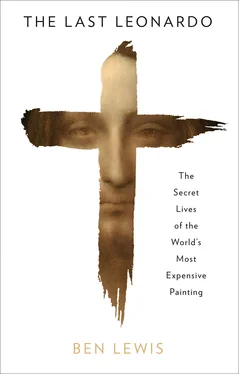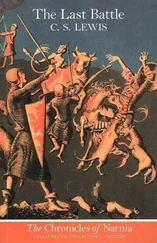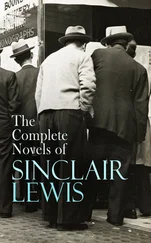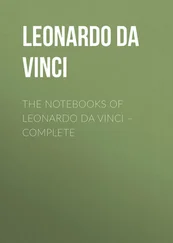As you go about town, be always alert when out walking, to observe and consider the actions of men while they are talking, thinking, laughing or fighting together, what actions are within them, and what actions the onlookers are doing … and make brief notes of these forms in your small notebook, which you must always carry with you, and it should be of tinted paper, so that it cannot be erased, and must be kept diligently, because the positions and actions are many, and the memory is unable to remember them all.
The surviving studies for the Salvator Mundi , however, which are drawn in red chalk on red tinted paper, were executed in the studio, because they were sketches of clothing – or drapery, to use the art historian’s terminology – and they were almost certainly based on draped mannequins, not live models. Today these drawings can be found in the Royal Collection at Windsor Castle.
‘Leonardo sometimes made clay models,’ wrote Giorgio Vasari, the great sixteenth-century Florentine art historian of the Renaissance, ‘draping the figures with rags dipped in plaster, and then drawing them painstakingly on fine Rheims cloth or prepared linen.’ Drapery was one of the essential components of Renaissance painting, and acted as a form of messaging in itself. The classical robes in which the saintly starring cast of Renaissance paintings were dressed elevated biblical stories to the level of the Antique, fusing the two great sources of wisdom of the age, the Bible and classical civilisation. Their sheen, dips and pleats were bravura exercises in realism, which advertised the illusionistic skill of the artist. There is a series of sixteen drapery studies drawn on linen, usually dated to the early 1470s, some attributed to Leonardo at the tender age of nineteen. The young artist shows the texture and characteristics of the fabric depicted as well as indicating the body underneath, the cloth flowing with curving arabesques and hard-edged angles, receding in pockets of shadow, and gleaming where it catches the light.
Leonardo usually planned his paintings with three stages of drawings. First, there were the studies of body parts, gestures, faces, drapery, anatomy and landscapes, drawn from life or sometimes from models or classical statues. In a second stage, he made sketches of combinations of figures or laid out the entire composition. Last came full-scale cartoons, which were traced onto the panel on which the final painting would be executed. There must have once been many preparatory drawings for the Salvator Mundi – for Christ’s face, the blessing hand and the orb, and perhaps for the entire composition – but only two pages of sketches survive. On one sheet there are two drawings – one of a man’s torso clothed with an episcopal garment known as a stole, and the other a smaller depiction of a forearm emerging from a rich crumple of sleeve, drawn in red chalk and then overdrawn in white. On the second sheet is a forearm with a sleeve finishing in a cuff, with drapery around it.
These sketches provide a host of intriguing clues about the Salvator Mundi . The fabric covering the chest is drawn in obsessive detail, one of the characteristics of Leonardo’s style, with thin rivulets of cloth, each one differentiated, running down from the band of embroidery around the neck, which has bunched up the fabric in tiny pleats. Looking at the painting, on the left side of the chest, just above a diagonal band, the garment’s fabric has become curiously scrunched. The artist seems to take particular care in showing how untidy this part of the clothing is. The shape and position of this crumple is momentous. At exactly the spot where the Holy Spear pierced Christ’s body on the cross, the wound of the Passion, it forms the Greek letter omega, a symbol of the divine. Novelists and historians of varying academic qualifications have written numerous outlandish interpretations of hidden symbols they have discerned by carefully squinting at Leonardo’s paintings, such as the Virgin of the Rocks and the Mona Lisa , but here in the Salvator Mundi there is a real one.
Other aspects of these sketches muddy the artistic waters of attribution. The forearm on this same page seems to have been drawn not by Leonardo but by another artist entirely, surely one of Leonardo’s assistants. In the 1930s, the great Leonardist Kenneth Clark catalogued the collection of Leonardo’s drawings owned by the British royal family, which included both of these sketches. He observed that the draftsmanship of the forearm is heavy-handed compared to the chest, and that, furthermore, the hatching runs left to right, while Leonardo’s always runs right to left, as one would expect of a left-handed artist.
The second drawing holds a puzzle too. The sleeved limb emerges from two loose loops of fabric, which closely resemble the drapery around Christ’s arm held up in blessing in the painting. But in the drawing the forearm is sleeved with a cuff at the end; in the painting it is bare. As a preparatory study it bears a surprisingly loose relationship to the finished painting.
We can vaguely date both drawings to the first decade of the sixteenth century, because of the evolution of Leonardo’s style and technique. He spent most of his early career sketching in pen and ink or silverpoint. In the mid-1490s he began using red chalk for studies for the apostles in The Last Supper . In the first decade of the sixteenth century, chalk became Leonardo’s primary drawing medium. The material was better suited to the style he was developing. Chalk’s softness allowed him to intensify his sfumato , the most gradual light-to-dark transitions which became the hallmark of his painting.2 It is in this later drawing style that the preparatory sketches are executed.
Drawing is the common denominator between all of Leonardo’s diverse activities as engineer, scientist and artist. And yet Leonardo had criticisms of drawing. One of the fundamental aspects of his thinking, which set him apart from his contemporaries, was his radical attitude to line. ‘Lines are not part of any quantity of an object’s surface, nor are they part of the air which surrounds this surface,’ he wrote. ‘The line has in itself neither matter nor substance and may rather be called an imaginary idea than a real object … Your shadows and lights should be blended without lines or borders in the manner of smoke losing itself in the air … O painter, do not surround your bodies with lines!’ There were no lines in the real world, he said, so don’t paint them.
In the cool and pungent backstreets of Milan, in the dark shops of the apothecaries, majolica vases lined the shelves, full of herbs, medicines, chemicals and pigments – the raw material for colouring the world. These were roughly chopped preparations of minerals, insects, animal remains and plants, waiting to be finely ground into powder, mixed with egg yolk or oils to make paint, and with water for dyes. The customers came and went – dyers, glassmakers, tailors, the manufacturers of ceramics and furniture, manuscript illuminators and painters.
Behind every Leonardo painting lay a global network of anonymous collaborators, with professions far removed from the creative arts. The minerals for pigments came in ships from distant Central Asian cities that few Europeans had seen, often via Syrian merchants. Some were manufactured in Venetian or Florentine laboratories run by religious orders. There was ultramarine powder ground from blue-veined chunks of lapis lazuli by the Jesuits of the Florentine Convent of Santo Giusto alle Mure; the semi-precious rock was imported from what is now Afghanistan and Uzbekistan, via Damascus. A more sensibly priced version of the same colour, from the same convent, was made of azurite acquired from Austrian and Balkan mines and manufactured with copper oxide. The chromatic reputation of these priests was so high that the Florentine contract commissioning the Adoration specified that Leonardo had to buy his colours from them. A red pigment came from the dried bodies of kermes lice from the eastern Mediterranean, mixed with water, alum and soda. Another came from boiled brazilwood, which Spanish and Portuguese merchants imported from the Latin American colonies. A third red, ‘dragon’s blood’, was a resin derived from various plants, and was used both as a medicine and a varnish. Cochineal was a scarlet named after the insects from which it came, and was imported to Italy via Antwerp. Rubies, which could be ground down into an expensive colour, were available too. White, ochre, and yet another red came from different treatments of lead. A dark ‘bone black’ came from a distillation of carcasses. Verdigris, a green familiar to us as the patina on old copper, was obtained by exposing copper plates to vinegar. Gold leaf was made from old coins, the thin sheets carefully placed between sheaves of paper in books. Saffron was used to make an intense yellow colour when mixed with alum and egg yolk. Thus, science and trade formed a basis for art.
Читать дальше












